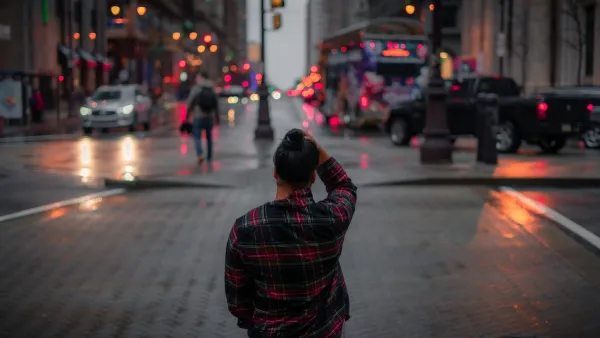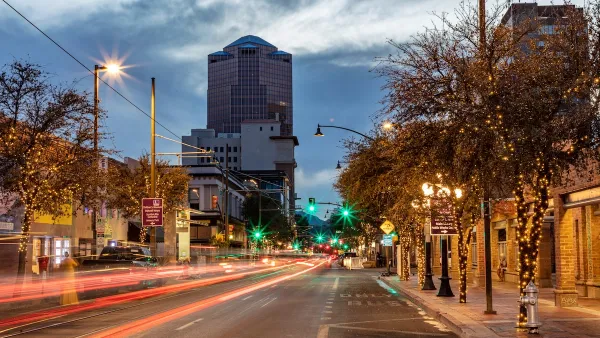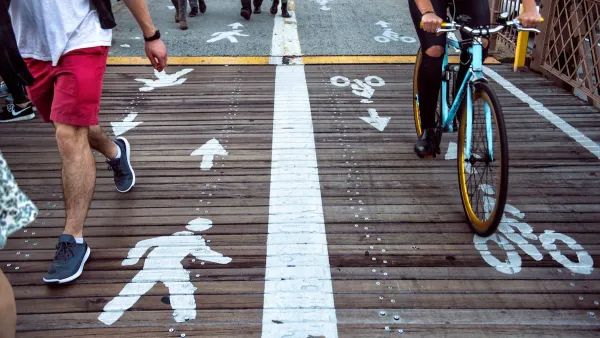Shopping for bulky items can be one of the challenges of living car free. Here are three of the best ways I've found for dealing with the problem.
I have spent about half my working life without a car- not just in New York where I now live, but in more auto-oriented cities such as Buffalo, Cleveland, Atlanta (for my first year or so there) and Jacksonville, Florida (for my first few months there). In those days, I would occasionally be asked: "But how do you deal with groceries"? In fact, I just read a newspaper column that seemed to lampoon concerns about walkability by raising the "how can you walk from the grocery store" trump card.
Admittedly, you can't carry as much in your hands as in a car- even if you save some strain on your hands by riding transit for part of the distance. But I personally have developed three ways of dealing with this problem. First, I sometimes just shop more often, and buy less food at a time. This worked best in Toronto, where there were lots and lots of grocery stores within walking distance of either my apartment or public transit. Similarly, in Queens I often employ this strategy because I love only a block and a half from a grocery store, and a few blocks from others.
Second, I have brought a suitcase or rolling cart to stuff groceries in (or alternatively, a really large trash bag). This strategy might look awkward, but seems more appropriate for longer trips when I want to buy more stuff (for example, if I am going to an unusual grocery store in another neighborhood, like Pomegranate in Brooklyn).
Third, I sometimes just buy a ton of groceries and take a taxicab home. This strategy works best in more auto-oriented cities like Jacksonville and Atlanta, where the nearest grocery is close enough for a cab ride to be relatively cheap, but far enough away that I wouldn't want to walk home with more than two or three grocery bags.*
*And to those of you who bicycle (which I don't): feel free to add your own thoughts.

National Parks Layoffs Will Cause Communities to Lose Billions
Thousands of essential park workers were laid off this week, just before the busy spring break season.

Retro-silient?: America’s First “Eco-burb,” The Woodlands Turns 50
A master-planned community north of Houston offers lessons on green infrastructure and resilient design, but falls short of its founder’s lofty affordability and walkability goals.

Delivering for America Plan Will Downgrade Mail Service in at Least 49.5 Percent of Zip Codes
Republican and Democrat lawmakers criticize the plan for its disproportionate negative impact on rural communities.

Test News Post 1
This is a summary

Test News Headline 46
Test for the image on the front page.

Balancing Bombs and Butterflies: How the National Guard Protects a Rare Species
The National Guard at Fort Indiantown Gap uses GIS technology and land management strategies to balance military training with conservation efforts, ensuring the survival of the rare eastern regal fritillary butterfly.
Urban Design for Planners 1: Software Tools
This six-course series explores essential urban design concepts using open source software and equips planners with the tools they need to participate fully in the urban design process.
Planning for Universal Design
Learn the tools for implementing Universal Design in planning regulations.
EMC Planning Group, Inc.
Planetizen
Planetizen
Mpact (formerly Rail~Volution)
Great Falls Development Authority, Inc.
HUDs Office of Policy Development and Research
NYU Wagner Graduate School of Public Service






























